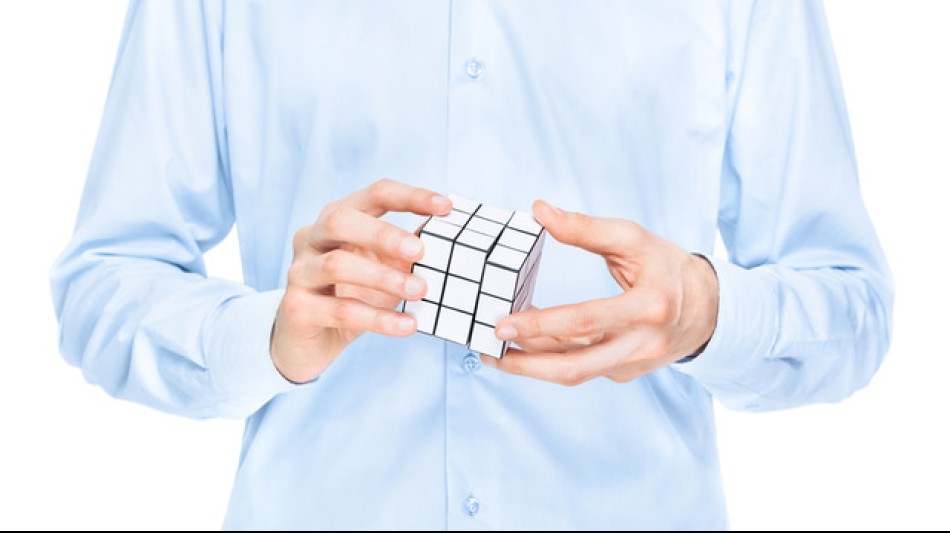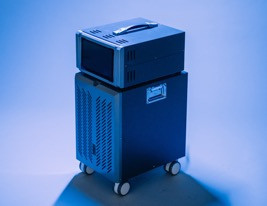

Battery X Metals Unveils Next-Generation Lithium-Ion Battery Rebalancing Machine Following Successful Full Capacity Recovery on a Real-World Imbalanced Battery from the #2 Out-of-Warranty Electric Vehicle Model in the United States in Preliminary Trial
News Release Highlights:
In its first-ever real-world application, Battery X Rebalancing Technologies' Prototype 2.0 successfully restored 100% of imbalance-related capacity on a 96-cell Nissan Leaf battery pack-one of the most common out-of-warranty electric vehicles in the United States-demonstrating the system's precision and effectiveness outside laboratory conditions.
The Company publicly unveiled its next-generation, patent-pending lithium-ion battery rebalancing machine, Prototype 2.0, during its Exclusive Live Investor Reveal Event held on May 30, 2025, providing a first look at the system's design, functionality, and commercialization roadmap.
This successful real-world application on a naturally imbalanced battery pack validates Prototype 2.0's core technology and sets the foundation for broader real-world trials, standard operating procedure development, and commercial deployment across additional high-volume electric vehicle platforms.
VANCOUVER, BC / ACCESS Newswire / June 2, 2025 / Battery X Metals Inc. (CSE:BATX)(OTCQB:BATXF)(FSE:5YW)(WKN:A40X9W) ("Battery X Metals" or the "Company") an energy transition resource exploration and technology company, announces that, further to its news release dated May 27, 2025 confirming the scheduling of its Exclusive Live Investor Reveal Event, and its news release dated May 30, 2025 announcing the successful completion of a preliminary trial (the "Trial") using Prototype 2.0 on a real-world naturally imbalanced battery pack from the second most common out-of-warranty electric vehicle model in the United States-the Nissan Leaf-the Company is pleased to unveil its second-generation, patent-pending lithium-ion battery rebalancing machine ("Prototype 2.0"), developed by its wholly owned subsidiary, Battery X Rebalancing Technologies Inc. ("Battery X Rebalancing Technologies").
As disclosed in the Company's news release dated May 30, 2025, the Trial marks the first real-world application of Prototype 2.0, validating the Company's proprietary rebalancing technology outside of controlled laboratory environments. The results demonstrated 100% recovery of imbalance-related capacity loss, confirming Prototype 2.0's ability to rebalance cell-level voltages and restore usable ampere-hour capacity in aging battery packs.
"This milestone represents a significant inflection point in our validation journey," said Massimo Bellini Bressi, CEO of Battery X Metals. "With Prototype 2.0, we've not only confirmed the technology's ability to detect and correct cell imbalances with precision, but we've now proven it can perform in real-world conditions. We believe this is the first of many major validations that will drive adoption of rebalancing as a viable solution for electric vehicle battery longevity."
Prototype 2.0 Unveiled During Live Reveal Event
On May 30, 2025, Battery X Metals hosted its previously announced Exclusive Live Investor Reveal Event (the "Live Reveal Event"), where it formally presented Prototype 2.0 to the public for the first time. The Live Reveal Event featured a live walkthrough of the system, a dedicated corporate video showcasing Prototype 2.0's design and functionality, and commentary from management on the Company's development roadmap and upcoming milestones.
Attendees were also shown an explanatory summary video about battery rebalancing, which outlines how lithium-ion cell imbalances affect battery performance and emphasizes the critical role of rebalancing in prolonging battery life.
The Company encourages all shareholders, stakeholders, industry participants, and interested parties to watch the featured videos to gain a deeper understanding of Prototype 2.0's patent-pending technology, the rebalancing process, and the significance of this validation milestone.
Watch the featured videos here:

Prototype 2.0
Summary of Trial Results
As disclosed in the Company's news release dated May 30, 2025, the Trial results (the "Results") were performed using Prototype 2.0 on the Nissan Leaf Battery Pack, The Nissan Leaf Battery Pack was first charged at 12 amperes using Battery X Rebalancing Technologies' cycling module to simulate a standard electric vehicle charging cycle. Once the first cell reached the voltage target of 4.20 volts (the "Voltage Target"), a rebalancing current between 0 and 3 amperes was applied individually to the remaining cells until all 96-battery cells successfully reached the Voltage Target. The Voltage Target lies within the standard operating range for LMO and LNO lithium-ion cells of 3.0 volts to 4.20 volts, with 4.20 volts commonly recognized as the full capacity in the industry¹.
According to the diagnostic report provided by the vendor of the Nissan Leaf Battery Pack (the "Battery Vendor Diagnostic Report"), the reported measured effective ampere-hour capacity of the Nissan Leaf Battery Pack prior to rebalancing was 50.34 ampere-hours (Ah). This served as the baseline capacity for the Trial. Following the Trial, Prototype 2.0's integrated software determined that 1.95 Ah of additional capacity had been successfully restored. While the Battery Vendor Diagnostic Report did not quantitatively indicate a loss of capacity, it indicated that the Nissan Leaf Battery Pack was operating at 50.34 Ah with minor voltage imbalance that placed the voltage below the Voltage Target. Rebalancing the cells to the Voltage Target achieved a 3.9 percent improvement in usable capacity.
The restored 1.95 Ah corresponds to the full theoretical rebalancing increase based on the Voltage Target achieved, and represents full recovery of the minor voltage imbalance indicated on the Battery Vendor Diagnostic Report. These results were determined by the Trial based on achieving the Voltage Target across all 96-battery cells, along with a software feature of Prototype 2.0 that shows the ampere-hours (Ah) capacity restored through rebalancing for each individual cell, with the largest discrepancy being 1.95 Ah, based on the Voltage Target. Battery X Rebalancing Technologies interprets this result as confirmation of Prototype 2.0's ability to restore all imbalance-induced lost capacity through precise voltage alignment and battery-cell level rebalancing.
Results
Trial Parameter | Value / Description |
Effective Capacity Before Rebalancing | 50.34 ampere-hours (Ah) |
Capacity Restored Through Rebalancing | 1.95 ampere-hours (Ah) |
Increase as Percentage (%) of Effective Capacity | 3.9% |
Effective Capacity After Rebalancing | 52.29 ampere-hours (Ah) |
Imbalance-Related Capacity Recovery1 | 100% |
Battery X Rebalancing Technologies views this successful demonstration as a critical step in the technology validation process, paving the way for expanded testing, operational protocol development, and eventual commercial deployment.
Refer to the Company's news release dated May 30, 2025, for additional information pertaining to the Trial and Results.
The Problem: Rising EV Adoption Presents New Battery Lifecycle Challenges
In 2024, global EV sales reached approximately 17.1 million units, representing a 25% increase from 20232. With cumulative global EV sales from 2015 to 2023 totaling an estimated over 40 million units3, a significant share of the global EV fleet is expected to exit warranty coverage over the coming years.
By 2031, nearly 40 million electric, plug-in hybrid, and hybrid vehicles worldwide are anticipated to fall outside of their original warranty coverage4,5. This projection is based on current EV adoption figures and standard industry warranty terms, and underscores a growing risk for EV owners facing battery degradation, reduced capacity, and costly replacement requirements6. As the global EV fleet continues to expand, the demand for technologies that extend battery life, reduce long-term ownership costs, and support a sustainable transition to electric mobility is increasing.
The Solution: Pioneering Next-Generation Technologies to Support Lithium-Ion Battery Longevity
Battery X Rebalancing Technologies' proprietary software and hardware technology aims to address this challenge by extending the lifespan of EV batteries. This innovation is being developed with the aim to enhance the sustainability of electric transportation and the goal to provide EV owners with a more cost-effective, environmentally friendly ownership experience by reducing the need for costly battery replacements.
Battery X Rebalancing Technologies' rebalancing technology, validated by the National Research Council of Canada ("NRC"), focuses on battery cell rebalancing. The NRC validation demonstrated the technology's ability to effectively correct cell imbalances in lithium-ion battery packs, recovering nearly all lost capacity due to cell imbalance. The validation was conducted on battery modules composed of fifteen 72Ah LiFePO₄ cells connected in series. The cells were initially balanced to a uniform state of charge (SOC), with a measured discharge capacity of 71.10Ah. In the validation test, three of the fifteen cells were then artificially imbalanced-one cell was charged to a 20% higher SOC, and two cells were discharged to a 20% lower SOC-resulting in a reduced discharge capacity of 46.24Ah, following rebalancing using Battery X Rebalancing Technologies' rebalancing technology.
These advancements establish Battery X Rebalancing Technologies as a participant in lithium-ion and EV battery solutions, aiming to tackle the critical challenges of capacity degradation of battery packs and expensive replacements. By extending the lifecycle of battery materials within the supply chain, Battery X Rebalancing Technologies aims to support the energy transition and promote a more sustainable future.
1 Battery University , 2 Rho Motion - Global EV Sales 2024, 3 IEA Global EV Outlook 2024, 4 IEA, 5 U.S. News, 6 Recurrent Auto
About Battery X Metals Inc.
Battery X Metals (CSE:BATX) (OTCQB:BATXF) (FSE:5YW, WKN:A40X9W) is an energy transition resource exploration and technology company committed to advancing domestic and critical battery metal resource exploration and developing next-generation proprietary technologies. Taking a diversified, 360° approach to the battery metals industry, the Company focuses on exploration, lifespan extension, and recycling of lithium-ion batteries and battery materials. For more information, visit batteryxmetals.com.
On Behalf of the Board of Directors
Massimo Bellini Bressi, Director
For further information, please contact:
Massimo Bellini Bressi
Chief Executive Officer
Email: [email protected]
Tel: (604) 741-0444
Disclaimer for Forward-Looking Information
This news release contains forward-looking statements within the meaning of applicable Canadian securities laws. Forward-looking statements relate to future events or performance and include statements regarding: the performance, functionality, and commercial potential of Prototype 2.0; the anticipated continuation and expansion of real-world testing; the Company's ability to conduct further trials across additional electric vehicle battery platforms; the development and refinement of standard operating procedures for rebalancing workflows; the validation and applicability of the Company's proprietary rebalancing technology to other lithium-ion chemistries and vehicle models; the potential for adoption of rebalancing technologies to extend battery lifespan and reduce ownership costs; the scalability and integration of the technology within commercial EV service environments; the Company's role in supporting the broader energy transition and battery circular economy; and future revenue generation, partnerships, and commercial deployment opportunities. Forward-looking statements are based on management's reasonable assumptions, expectations, estimates, analyses, and opinions as of the date of this news release. These forward-looking statements involve known and unknown risks, uncertainties, and other factors that may cause actual results, performance, or achievements to differ materially from those expressed or implied by such statements. These risks and uncertainties include, but are not limited to: the ability to replicate real-world trial results at scale or across different battery configurations; the ongoing performance of Prototype 2.0 in controlled and uncontrolled environments; evolving market acceptance of battery rebalancing technologies; the Company's ability to secure strategic partnerships and funding; general business, technological, regulatory, and economic conditions; and other risk factors disclosed in the Company's public filings on www.sedarplus.ca. There can be no assurance that the Company's technology will function as intended in all scenarios, that further validation will yield consistent results, or that rebalancing will be broadly adopted as a standard EV battery maintenance or longevity solution. The Company undertakes no obligation to update or revise forward-looking statements, whether as a result of new information, future events, or otherwise, except as required by applicable securities laws.
SOURCE: Battery X Metals
View the original press release on ACCESS Newswire
D.Nielsen--RTC



